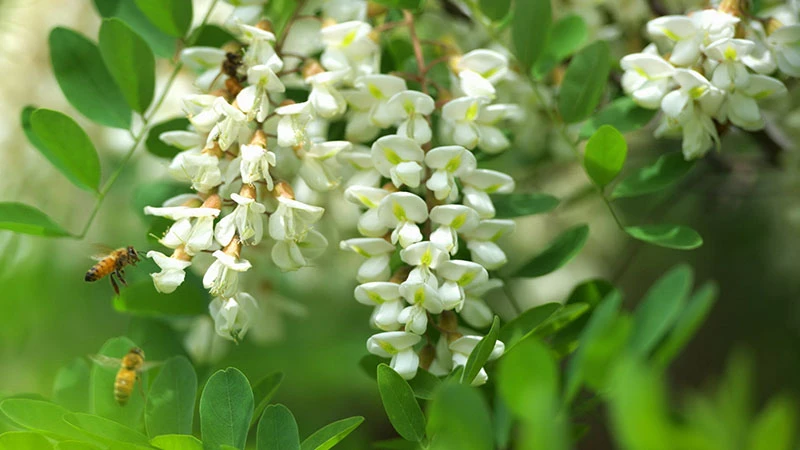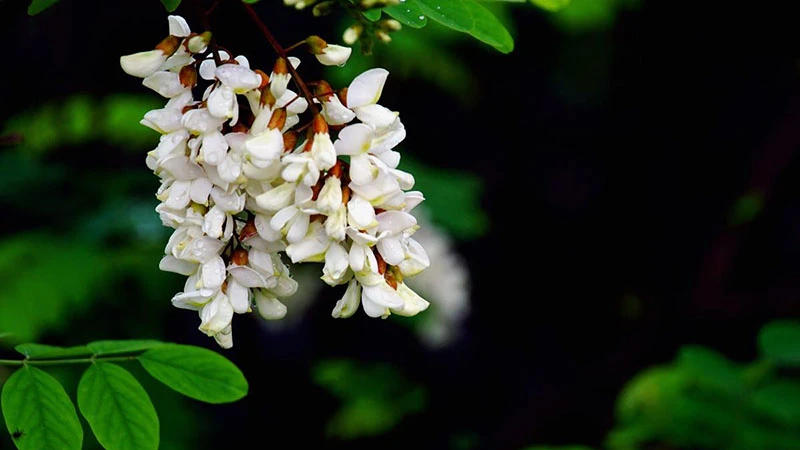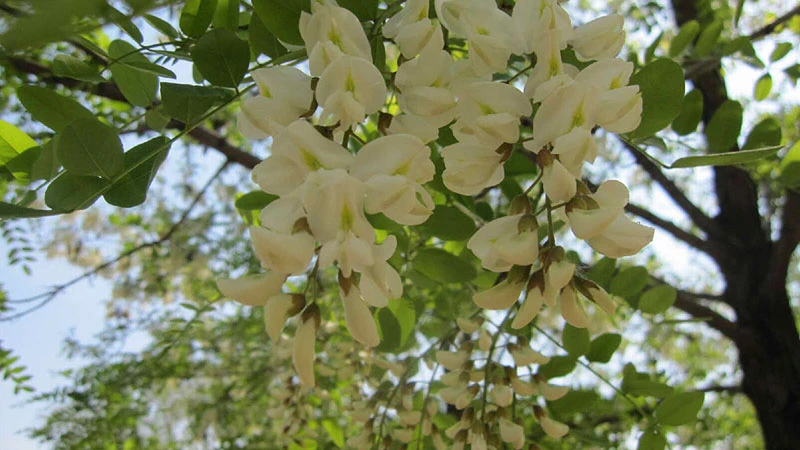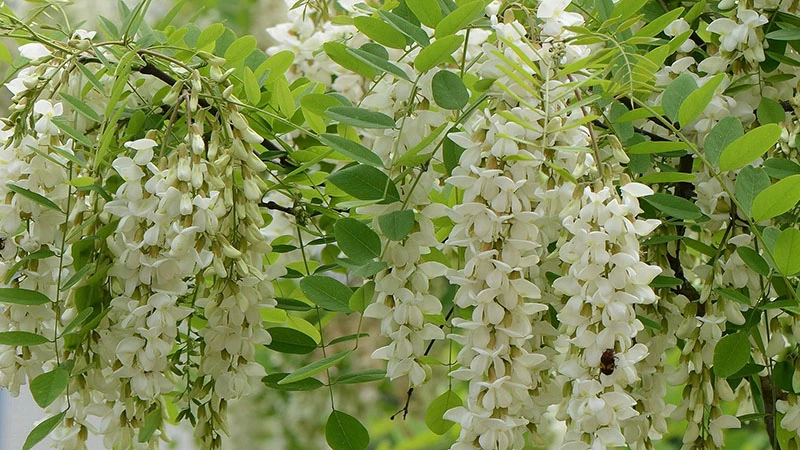Every year, April ushers in a delicate and fleeting spectacle in the countryside— the bloom of locust trees. These unassuming trees burst into clusters of soft white blossoms, revealing a charm that captivates both the eyes and the palate. From afar, the flowers appear as pure white, but upon closer inspection, they possess a subtle hint of green, giving them an ethereal quality. Their gentle beauty is paired with a sweet fragrance, drawing both humans and animals into their embrace.

Unlike most trees that either produce flowers for beauty or fruits for sustenance, the locust tree offers both. Its blossoms are not just a treat for the eyes but also a delicacy for the taste buds. Long revered in traditional cuisine, locust blossoms are used to make dumplings, stir-fries, and even steamed buns. The flower's duality—its visual allure and culinary utility—has made it a beloved symbol of springtime abundance.
When the blossoms are in full bloom, they crowd together in dense clusters, as though competing for space on the same branch. The sight of them standing side by side evokes memories of bustling families and close-knit communities. Unlike solitary flowers that bloom in isolation, locust blossoms thrive in their togetherness, each one playing a part in the tree's grand display. They remind us of the joy found in companionship, much like the harmonious connections shared in our own lives.
A Bitter Harvest for the Resilient Locust Tree
As beautiful as the locust tree's blossoms are, their fate is bittersweet. Every year, as they reach their peak bloom, people eagerly harvest them, stripping the branches bare in a frenzy reminiscent of locust swarms. The trees, which were once lush and full of life, are left battered and broken, their beauty sacrificed for the enjoyment of those who feast on their flowers.
Yet, the locust tree is no stranger to hardship. Despite the annual onslaught, it endures with remarkable resilience. After being stripped of its blossoms, the tree focuses on growing its leaves, absorbing sunlight, and quietly regenerating. It soldiers on, undeterred, as if it has forgotten the violence done to it. Its leaves, growing in neat rows, resemble the disciplined nature of its blossoms, offering a visual reminder that life continues, even after destruction.
This cycle of bloom, harvest, and recovery is a testament to the tree's tenacity. The locust tree doesn't just survive—it thrives in spite of adversity. Its ability to bounce back year after year, offering its blossoms and leaves, speaks to a quiet strength that resonates deeply with those who have witnessed its yearly revival. The tree's story is one of endurance, a symbol of nature's capacity for renewal.
Locust Trees: A Fading Legacy
Once a common sight in rural landscapes, locust trees are becoming increasingly rare. In times past, every homestead boasted a locust tree or two, with families enjoying their flowers in spring and their shade in summer. The trees provided not only sustenance but also fodder for livestock. Their golden leaves in autumn, fluttering down like coins, created a magical scene for children playing beneath them.
However, the slow growth of locust trees and their limited economic value have led to their decline. They have been replaced by fast-growing trees like poplars, which offer more immediate returns. Many of the tall, majestic locust trees that once dotted the countryside have been felled, leaving only a few survivors clinging to life in forgotten corners of villages. The resilience of these remaining trees is evident in their stubborn refusal to give up—still blooming, still growing, despite being neglected and often damaged.



